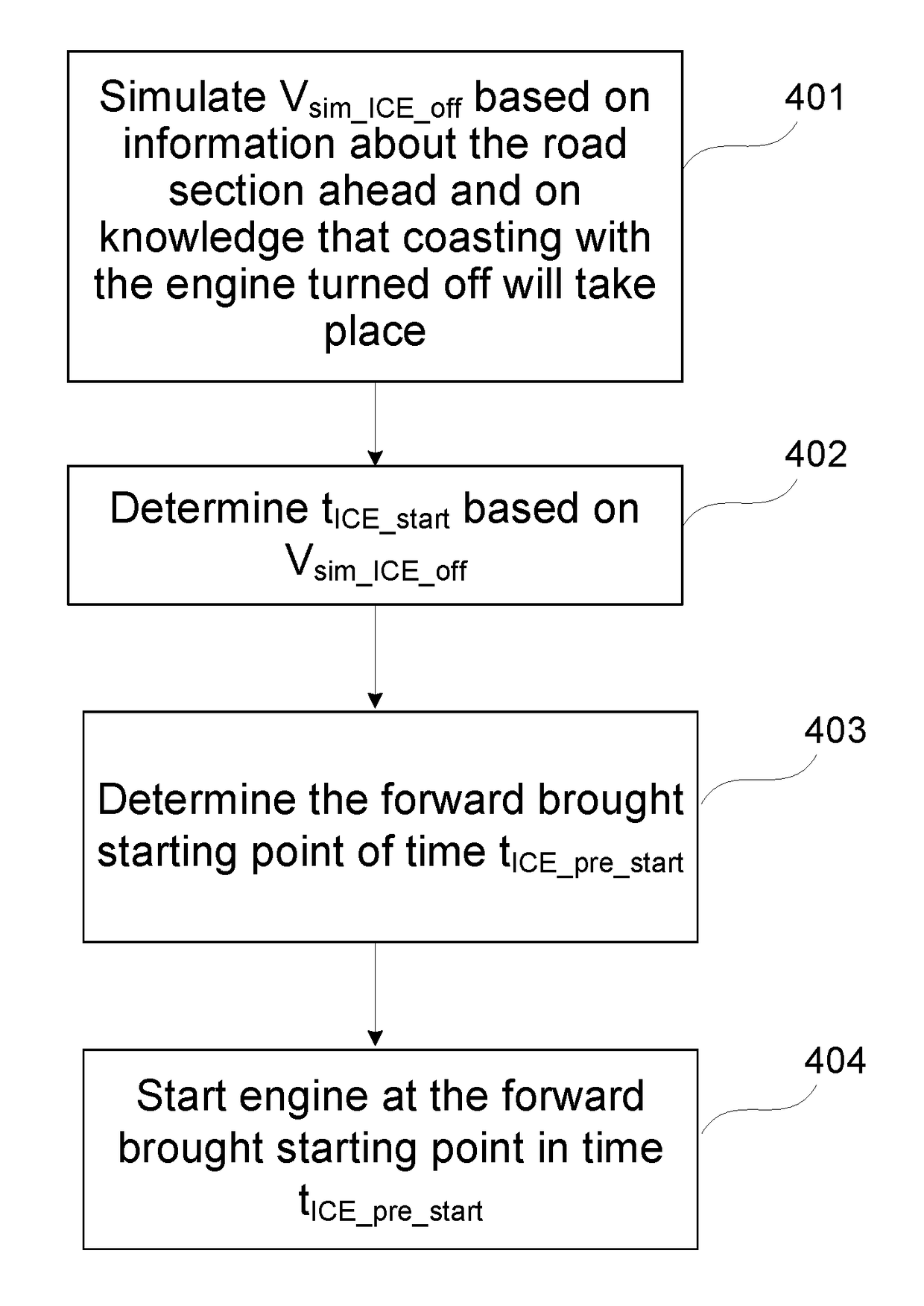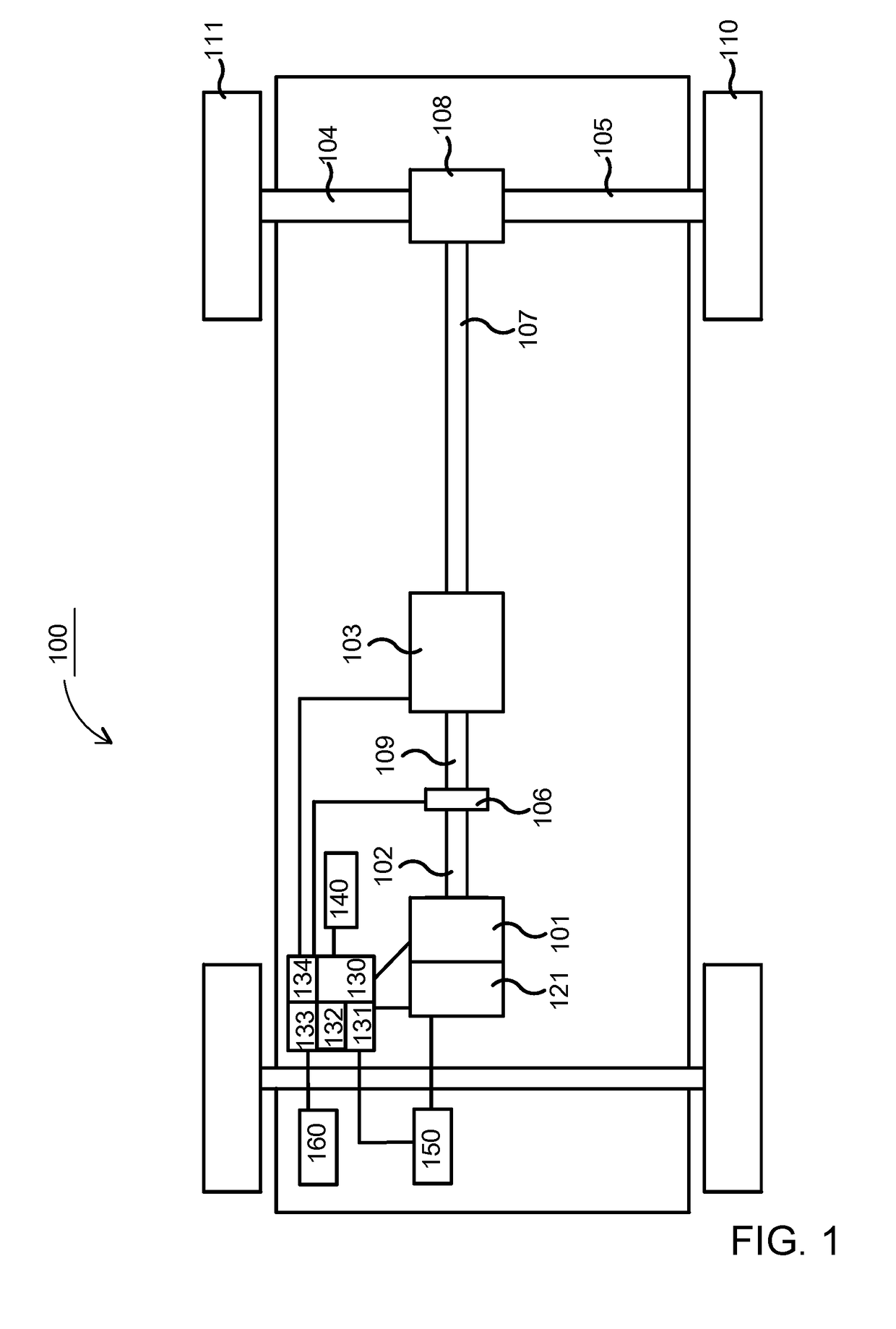Control of an internal combustion engine in a vehicle
a technology of internal combustion engine and control device, which is applied in the direction of electric control, machines/engines, road transportation, etc., can solve the problems of insufficient reduction and fuel consumption, and achieve the effect of reducing the request of positive engine torque, fuel saving, and reducing fuel injection
- Summary
- Abstract
- Description
- Claims
- Application Information
AI Technical Summary
Benefits of technology
Problems solved by technology
Method used
Image
Examples
Embodiment Construction
[0041]FIG. 2 shows schematically a non-limiting example of a driving situation, a downhill slope, where the present invention may be applied. The invention may also be applied in other driving situations, for example at a speed reduction, which may occur on a flat road. However, the driving situation in FIG. 2 will here, for pedagogical reasons, be used to describe principles used by the invention.
[0042]For the vehicle in FIG. 2, an energy relationship may be set up for the driving situation:
mgh=(½mv22−½mv12)+(Fair+Frr+Feng+Fgb+Faxle / nav)·s (equation 1)
where:[0043]mgh is the vehicle's potential energy;[0044]½mv22 is the vehicle's kinetic energy up on the top of the hill;[0045]½mv12 is the vehicle's kinetic energy at the end of the slope;[0046]Fair is the vehicle's air resistance;[0047]Frr is the vehicle's rolling resistance;[0048]Feng is the engine friction;[0049]Fgb is the gearbox friction;[0050]Faxle / nav is friction in the rear shaft, seals and wheel bearings; and[0051]s is the d...
PUM
 Login to View More
Login to View More Abstract
Description
Claims
Application Information
 Login to View More
Login to View More - R&D
- Intellectual Property
- Life Sciences
- Materials
- Tech Scout
- Unparalleled Data Quality
- Higher Quality Content
- 60% Fewer Hallucinations
Browse by: Latest US Patents, China's latest patents, Technical Efficacy Thesaurus, Application Domain, Technology Topic, Popular Technical Reports.
© 2025 PatSnap. All rights reserved.Legal|Privacy policy|Modern Slavery Act Transparency Statement|Sitemap|About US| Contact US: help@patsnap.com



